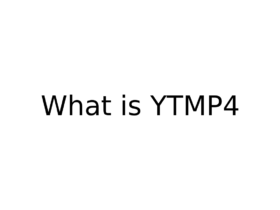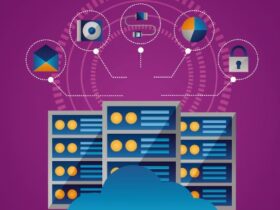A appropriate framework to support backend development is crucial in order to assure the success of development of a web development initiative. The backend frameworks offer the necessary tools and libraries to build and control the servers-side elements of web applications and take care of everything from database interaction to authentication, through business logic as well as API development. This piece focuses on some of the most popular backend frameworks that developers rely on to build sturdy and reliable applications.
1. Express.js
Express.js is a fast, simple and non-biased framework, which is compatible alongside Node.js. It provides a thin layer of the fundamental web-based apps but without concealing Node.js features. Express is widely regarded as an open platform that lets users build anything they want from basic web-based applications, as well as strong APIs.
Key qualities:
Flexible and simple: Express allows developers to utilize middleware and more tools whenever needed. This offers a highly versatile development setting.
Speed: Built on highest level of Node.js Express is known for its efficiency and speed especially for executing various I/O operations.
Big Ecosystem: The vast array of middleware offered to Express makes it easy to integrate all the necessary functions.
Utilization: Apps can be used to create microservices, APIs and applications that can be RESTful in addition to single-page apps.
2. Django
Django is a high-level Python web framework that allows for quick development and an easy and practical design. It’s known for its “batteries-included” philosophy, meaning it comes with a range of built-in features such as authentication, ORM and administration tools.
Key aspects:
Batteries included: Django comes with built-in features like an ORM, a security system, as well as an administrator panel that can benefit accelerate development.
Security: Django has several built-in security features, including protection against SQL injections, cross-site scripting, as well as forging of cross-site queries.
Scalability: The Django design is based on reuse and makes it suitable to expand applications over the course of growth.
Applications: Examples frequently used in material management platforms, e-commerce platforms and large-scale corporate software.
3. Ruby on Rails
Ruby on Rails commonly referred to as Rails is a web-based server framework that is written in Ruby. It follows the model-view-controller (MVC) architecture and emphasizes the use of convention over configuration (CoC) and the Don’t Repeat Yourself (DRY) principle.
Key Characteristics:
Convention for configuration: Rails comes with reasonable defaults to speed the development process since it eliminates the need to configure.
Active Record or ORM: The Active Record feature in the ORM allows developers to communicate with databases using Ruby software. This can make the database query process more efficient.
A huge community: Rails has a large collection that is comprised of gems (libraries) that enhance the capabilities of Rails, making it easy to add the latest features, and not have to construct it by beginning from scratch.
Use Cases make great web-based social network websites as well as online shopping platforms and also quick prototyping.
4. Laravel
Laravel is a PHP framework, and is well-known for its elegant syntax, as well as its functionalities that are user-friendly for developers. It was created to benefit make web development to be more efficient through simple processes like the routing and authentication process and also the capability to store information.
Key attributes:
MVC Architecture: Laravel is built on the MVC pattern. It aids in organizing the code in a systematic and easy to manage manner.
Eloquent ORM: A product from Laravel is well-known for its easy syntax which facilitates database interaction.
Blade templating engine: Laravel includes the Blade templating engine, which allows developers to write easy and reusable programming code that renders their vision.
Applications: The most commonly used cases for developing custom web-based apps, SaaS platforms, and platform for managing materials.
5. Spring Boot
The introduction: Spring Boot is an addition of the Spring framework that simplifies development of Java-based applications. It’s designed to reduce the steps in setting up an application’s Spring framework.
Key qualities:
Microservices Integration: Spring Boot is widely used for creating microservices due to its embedded server as well as its simple configuration.
Secure Enterprise: Spring Boot comes with an integrated feature to support enterprise level security that makes it an ideal opportunity for projects with a large scale.
Rich ecosystem: Spring Boot integrates seamlessly into the overall Spring ecosystem. It comes with a wide range of tools required to cover everything from security as well as security for data access.
Use cases leading suited to advanced enterprise applications, complex enterprise applications and microservices-based architectural designs.
6. Flask
Flask is a light WSGI web-based application framework which is developed in Python. It is classified as a microframework, since it does not require any specific library or software. It instead provides basics functionality, with options for extension to serve greater features.
Key qualities:
Basis: Flask offers a easy and flexible way for web-based application development, allowing users to choose their own software.
Easy to master: Flask’s simplicity makes it easy to grasp and it makes it a great solution for projects that require only a few novices.
Extra Flask can be expanded with various plug-ins to include features like integration with databases and forms.
Applications: Examples are perfect for apps which are medium or small in terms of size, together RESTful APIs and rapid prototyping.
7. ASP.NET Core
ASP.NET Core is an open-platform, high-performance framework created to build modern web-based apps that are web-based and cloud-connected. Created by Microsoft and developed for speed in addition to light and flexible.
Key qualities:
Cross-Platform: ASP.NET Core runs on Windows, macOS, and Linux It is an adaptable choice for programmers.
Advanced Performance: ASP.NET Core is well-known due to its performance and speed especially for jobs which are CPU-dependent.
Integrated Security: ASP.NET Core is equipped with powerful security features, such as the authentication built-in feature as well as authorization.
Example of Application Commonly used in cloud-based enterprise apps, along with APIs.
Conclusion
Selecting the appropriate backend framework is vital in the development of a reliable web-based app. It is essential to make your choice based on the particular requirements of your application and on the language your group can easily understand as well as the size of the app you’re planning to develop.








Leave a Reply